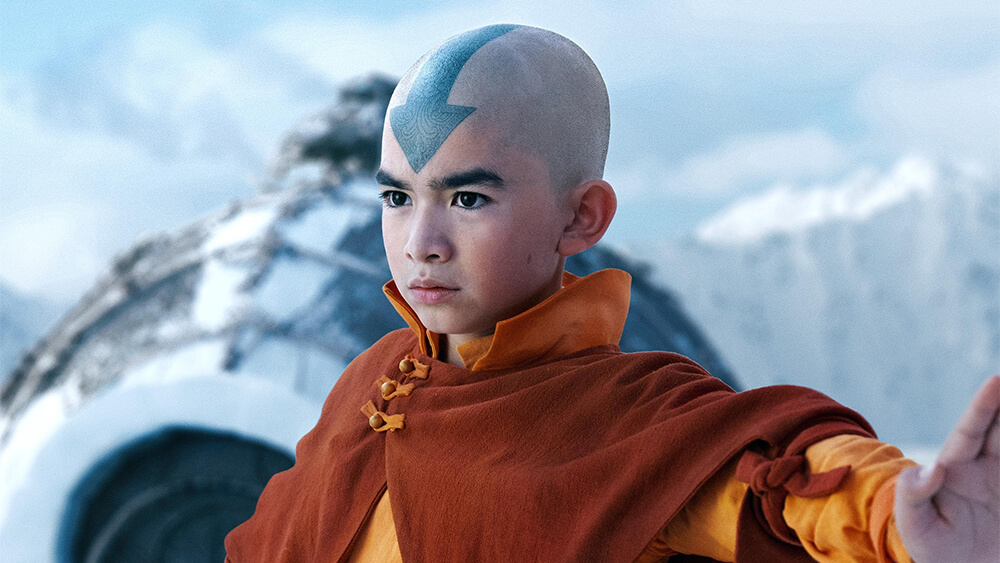The latest live-action take on Avatar: The Last Airbender premiered in February this year, and while it’s not the exact 1-to-1 reimagining fans were anticipating, it isn’t entirely hopeless either.
I grew up on the original 2005 animated series and kept up with the Avatar franchise through its many video games, comics, and, of course, the 2012 sequel series, “The Legend of Korra.” Because of this, when the oddly perfect combination of the COVID-19 lockdowns and Netflix led to a resurgence of the animated show’s popularity, I and the rest of the fanbase were ecstatic.
New and returning fans screamed from their virtual rooftops as they expressed their love for the series online, so much so that Nickelodeon couldn’t ignore the noise any longer, leading to the birth of “Avatar Studios,” now with many exciting projects in the pipeline.
Unfortunately, when it comes to live-action, the Avatar franchise does not have the best track record, specifically M. Night Shamylan’s 2010 “The Last Airbender,” considered to be one of the worst cases of source material butchery. Over a decade later, only now has Netflix taken on the challenge of cleansing the Avatar image in the live-action space, and even though the new adaptation has its flaws, it’s already being seen as a major improvement from Shamylan’s movie.

Unbalanced core
First things first, the Netflix live-action show has been talked about at length for its shortcomings, of which there are many. The rushed storylines, forced exposition, lack of character development, and much more may also hint at why the original creators of the animated show, Michael Dante DiMartino, and Bryan Konietzko, left this production halfway through.
Weirdly enough, the animated series on Nickelodeon in 2005 treated its audience with more respect and maturity than its Netflix counterpart. The original show would use clever writing and generous pacing to give viewers time to process the heavy themes in the show about loss, grief, and responsibility.
However, Netflix does the complete opposite. Each character tells you exactly what they’re feeling at all times, with zero room for interpretation. Instead of showing us the character’s personalities and motivations, they spell it out for you, taking on the “tell, don’t show” approach to storytelling. This is a trend that I have felt plaguing recent media, as it seems studios are losing trust in the audience to pay attention or grasp simple narratives.
Glimmers of hope
While it is a dumbed-down version of season one of the animated series, I found myself surprisingly enjoying some aspects of this adaptation. Right off the bat, the casting is spot-on. Gordon Cormier, Kiawentiio, and Ian Ousley look and feel the part of our protagonists, Aang, Katara, and Sokka, mainly held back by the show’s writing, as we don’t get to see them interact all that much. Ditto for the rest of the casting, especially in promo interviews, as we see just how good their chemistry is.
Additionally, there were some changes made from the original show that I was happy with, or at least understood since adaptations naturally require some basic restructuring of the narrative. One of which was mixing Jet’s story into the city of Omashu instead of separate episodes, as it made sense why he and his crew would be present in a major city with plenty of opportunity to carry out their rebellion against the fire nation.
Lastly, the visuals in bringing the cartoon to life were done really well. The costumes are colorful and full of detail, hinting at the rich history behind each nation while maintaining the vibrant palette of the animated series. The effects and soundtrack departments were also at the top of their game, from the creepy and gorgeous monster designs to musical references to the cartoon that only those familiar with the original would pick up on.
Second chances
If Netflix makes the right tweaks to the writing and pacing of this adaptation, there is still a chance this show can unlock its true potential. Especially after the heartwarming announcement of the next two seasons, I want to see this franchise prosper.
The Netflix series is currently in the midst of changing showrunners; with Albert Kim stepping back from the position, Netflix now has the perfect opportunity to make the necessary changes moving forward.
If not, fans can still look forward to the many other Avatar projects coming up, such as an animated movie with the continuation of Aang and his friend’s stories. “Aang: The Last Airbender” is scheduled to release in October next year, marking the 20-year anniversary since the release of the original animated series,
After years of waiting, it’s refreshing to see the Avatar franchise taking its next steps in expanding its mythos.

